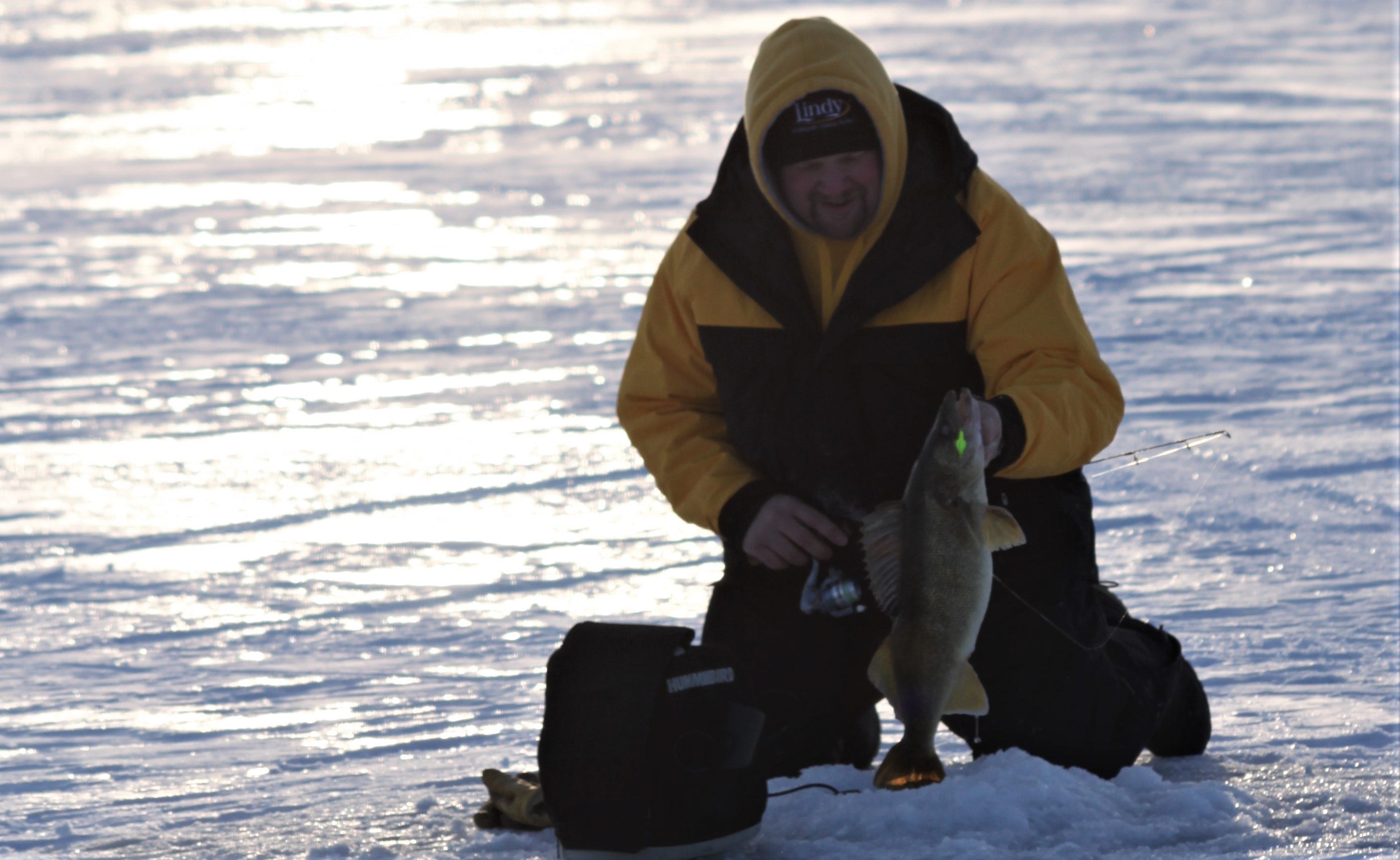- Nov 22, 2021
Top Strategies for Early Ice Walleyes
Fish Ed TV host Jon Thelen offers insights on the factors that influence walleye behavior early in the ice season and how to use that knowledge to find fishing success.
“For the most part, they’re in the same places we left them in the fall when we were in boats,” Jon Thelen said about early ice walleyes. “They tend to be tighter to the shoreline, using main lake points, the first breaks out, and any weeds that are hanging on.”
Two primary factors influence the walleyes’ locations during the first part of the ice season, according to Thelen, who has made a lifelong study of fishing in the North Country and who makes his living teaching others how to catch more fish through Fish Ed TV. First, they follow food sources. As importantly, they are influenced by human activity – specially, fishing pressure – atop the ice.
Early ice offers some of the best opportunities of winter, and it’s a time that many anglers anticipate from the time the safe ice goes away at the end of the previous winter. Ice season will be here soon, so we asked Thelen for insights about how to find and catch the most walleyes during the first part of the ice season.
Food Factor


Various silver-sided minnow species remain plentiful in relatively shallow water during early winter, Thelen said, noting that while specific species and behaviors vary from lake to lake, many types of minnows spawn during late fall and remain shallow or simply find the habitat they favor around remnant weedbeds and over shallow structure. He pointed toward the Rainy River shiner run and the tullibee spawn as examples.
Unless something pushes them away, walleyes will remain in an area as long as the food stays in that area and dissolved oxygen levels remain sufficiently high. During early ice, which Thelen normally thinks of as going through Christmas in Minnesota – minnows tend to remain plentiful around shallow structure and cover.
Remnants of green cabbage provide important early-season structure and are often overlooked, Thelen noted. “Anglers think the weeds are all gone, but often you can find remnant weeds in the 10-foot-range. And those can be really productive areas.”
The weeds serve double duty for walleye anglers because they provide habitat for the baitfish, which attract the walleyes, and they give the walleyes ambush points. If Thelen can find remnant weed areas he’ll fish right beside them. Otherwise, he’ll focus on structural features that relate to the shore, including points and the first and second breaks, often in the 10- to 15-foot rage.
Fishing Pressure


Early ice is exceptionally popular on many waterways and ice fishermen tend to form communities, which can have a major impact on the fish’s locations and behavior. The sheer sound of all the movement atop the ice and the number of ice lures the walleyes see cause them to become cautious and often to abandon areas while conditions are still otherwise good.
If Thelen doesn’t find the number of fish he expects to in prime areas or if the bite seems off, the amount of fishing pressure will largely dictate his next move. If he’s fishing a very popular early ice lake, he’ll often check the next break out, where fish might have moved to get away from all the activity. However, if the areas he’s fishing have not been getting much pressure, he’s much more likely to simply move along the same break or to a different shallow feature because there is no reason for the fish to have moved deeper.
“I equate it to deer hunting,” Thelen said. “You’ll see plenty of deer moving until the season opens, and then when everyone hits the woods, they become much more nocturnal and move less. Nothing has changed, in terms of conditions. It’s all about human activity in the woods.”
Thelen noted that just as the deer will start moving again after the opening weekend peak, walleyes pushed out by pressure often will move back to the shallower structure as angers start moving deeper, if conditions remain good shallow and the food is still there.
If they didn’t move naturally, often they will move back. That can provide a great opportunity if the crowds of ice fishermen have moved to deeper water, Thelen pointed out.
Because ice fishing pressure can have a major impact on the behavior of the walleyes, Thelen seeks waters that are less pressured, whether that means less popular lakes or areas of lakes that are farther from popular access points and typically get less fishing pressure.
Early Ice Approaches
Thelen favors more natural presentations early in the ice season than at any other time because the visibility is the best it will be the entire season. The walleyes are generally shallower than they will be through mid-winter, and the ice isn’t as thick as it will be later and usually has less snow on it. All those factors equate to more light penetration and better visibility. Consequentially, the fish are more easily spooked by bolder offerings.
Two of Thelen’s favorite baits for early-ice walleyes are the Lindy Quiver Spoon and the new Rattl’n Quiver Spoon. Both offer a slow, fluttering fall that allows for highly natural presentations. These spoons also have metallic back side, which effectively imitates the flash of baitfish in the water.
Thelen generally favors the original Quiver Spoon and its extreme subtlety for fishing in clear water and the new Rattl’n Quiver Spoon for water that is more stained, because the rattle helps draw in the fish. He is also a long-time fan of the Rattl’n Flyer Spoon for early-season walleyes.
For the same reasons, Thelen generally favors metallic colors and natural colors, such as a perch pattern, early in the ice season. He also tends to use slower and more subtle presentations. Even though walleyes are generally active and in a feeding mode early in the ice season, they spook easily in the shallow water.
Always an Exception
All that said, occasionally Thelen will try a substantially more aggressive approach very early in the season, especially if he is waters that tend to produce big walleyes. See why!



